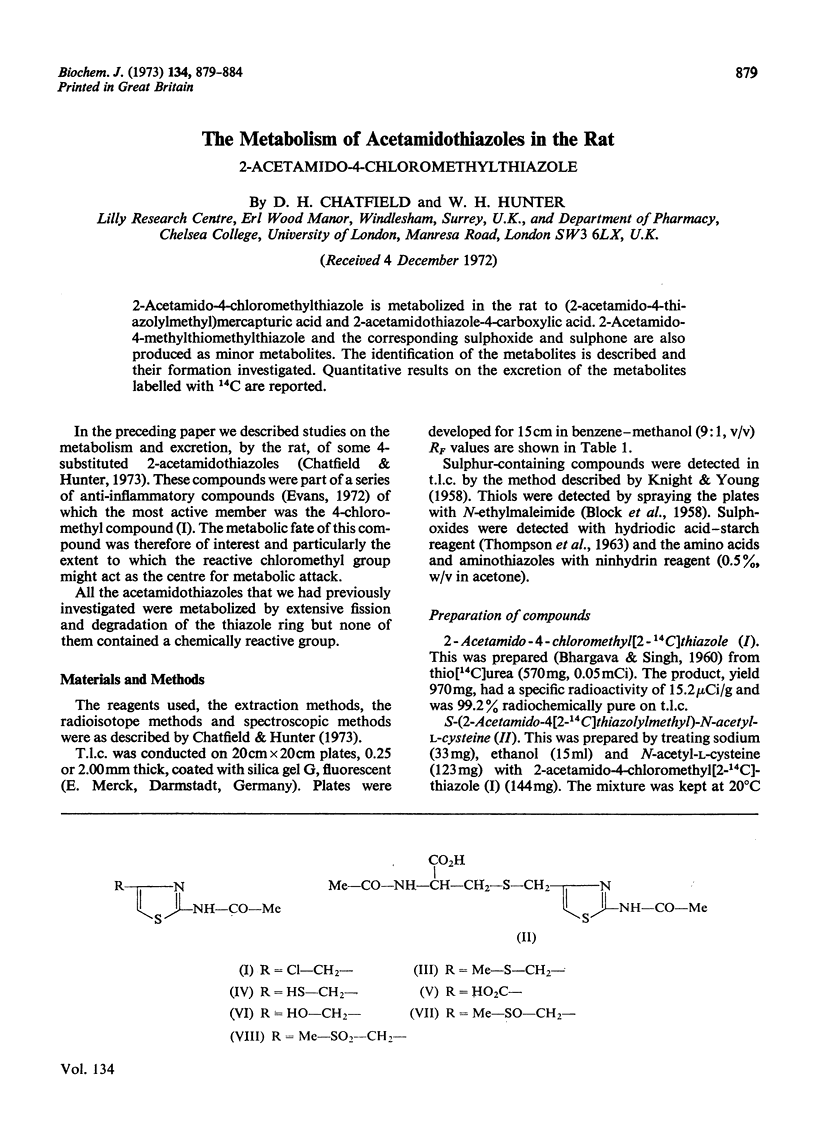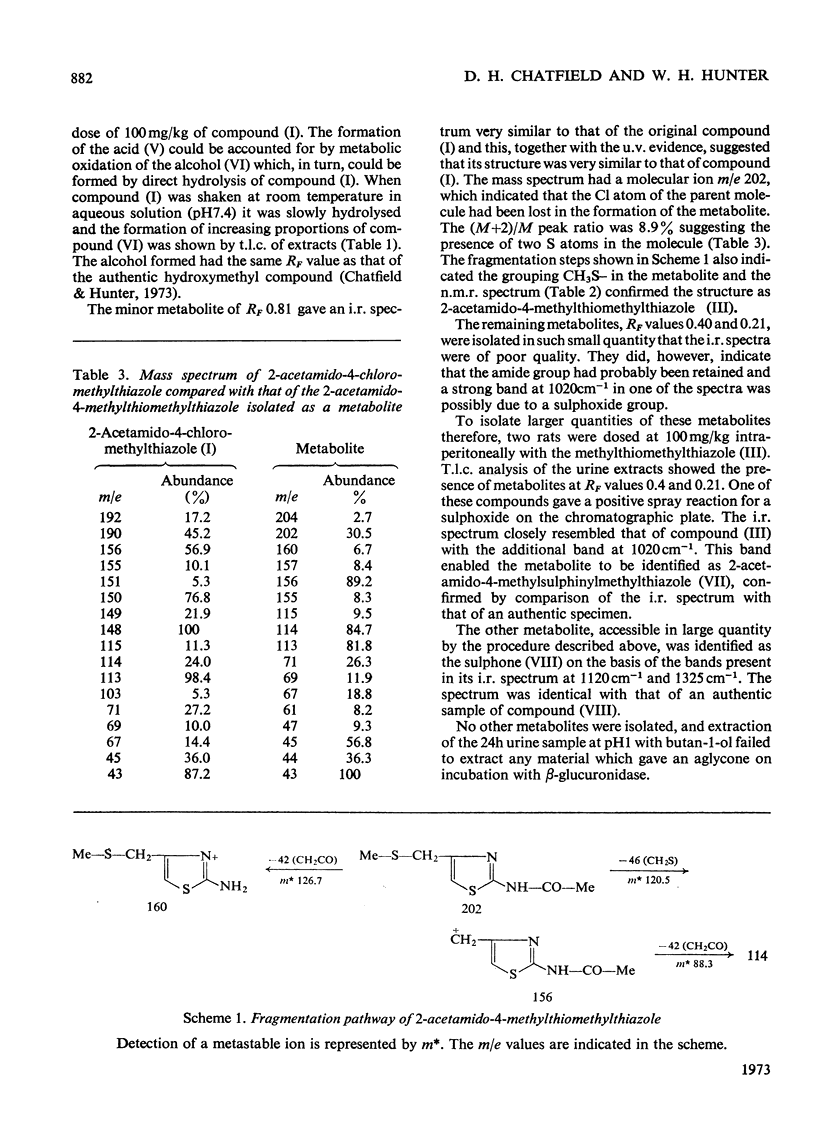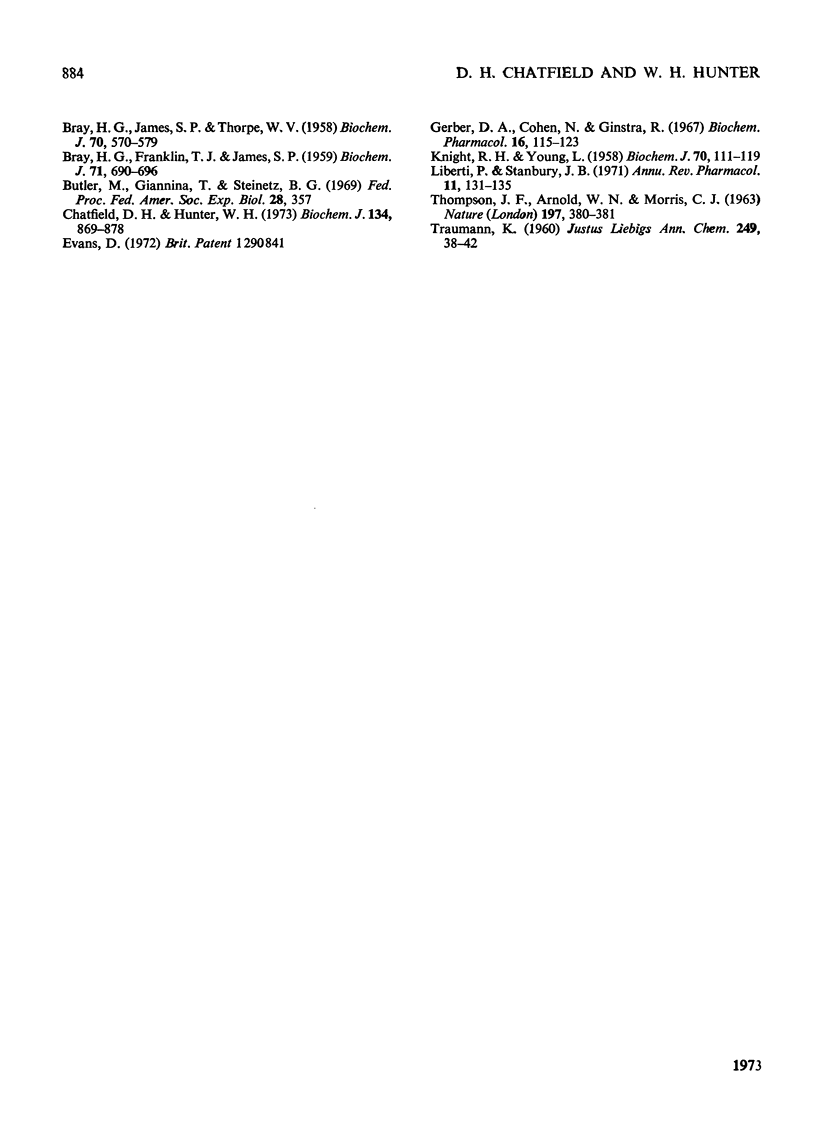Abstract
2-Acetamido-4-chloromethylthiazole is metabolized in the rat to (2-acetamido-4-thiazolylmethyl)mercapturic acid and 2-acetamidothiazole-4-carboxylic acid. 2-Acetamido-4-methylthiomethylthiazole and the corresponding sulphoxide and sulphone are also produced as minor metabolites. The identification of the metabolites is described and their formation investigated. Quantitative results on the excretion of the metabolites labelled with 14C are reported.
Full text
PDF





Selected References
These references are in PubMed. This may not be the complete list of references from this article.
- BRAY H. G., FRANKLIN T. J., JAMES S. P. The formation of mercapturic acids. 2. The possible role of glutathionase. Biochem J. 1959 Apr;71(4):690–696. doi: 10.1042/bj0710690. [DOI] [PMC free article] [PubMed] [Google Scholar]
- BRAY H. G., JAMES S. P., THORPE W. V. Metabolism of some omega-halogenoalkylbenzenes and related alcohols in the rabbit. Biochem J. 1958 Dec;70(4):570–579. doi: 10.1042/bj0700570. [DOI] [PMC free article] [PubMed] [Google Scholar]
- Chatfield D. H., Hunter W. H. The metabolism of acetamidothiazoles in the rat. 2-Acetamido-, 2-acetamido-4-methyl- and 2-acetamido-4-phenyl-thiazole. Biochem J. 1973 Aug;134(4):869–878. doi: 10.1042/bj1340869. [DOI] [PMC free article] [PubMed] [Google Scholar]
- KNIGHT R. H., YOUNG L. Biochemical studies of toxic agents. 11. The occurrence of premercapturic acids. Biochem J. 1958 Sep;70(1):111–119. doi: 10.1042/bj0700111. [DOI] [PMC free article] [PubMed] [Google Scholar]
- THOMPSON J. F., ARNOLD W. N., MORRIS C. J. A sensitive qualitative test for sulphoxides on paper chromatograms. Nature. 1963 Jan 26;197:380–381. doi: 10.1038/197380a0. [DOI] [PubMed] [Google Scholar]


